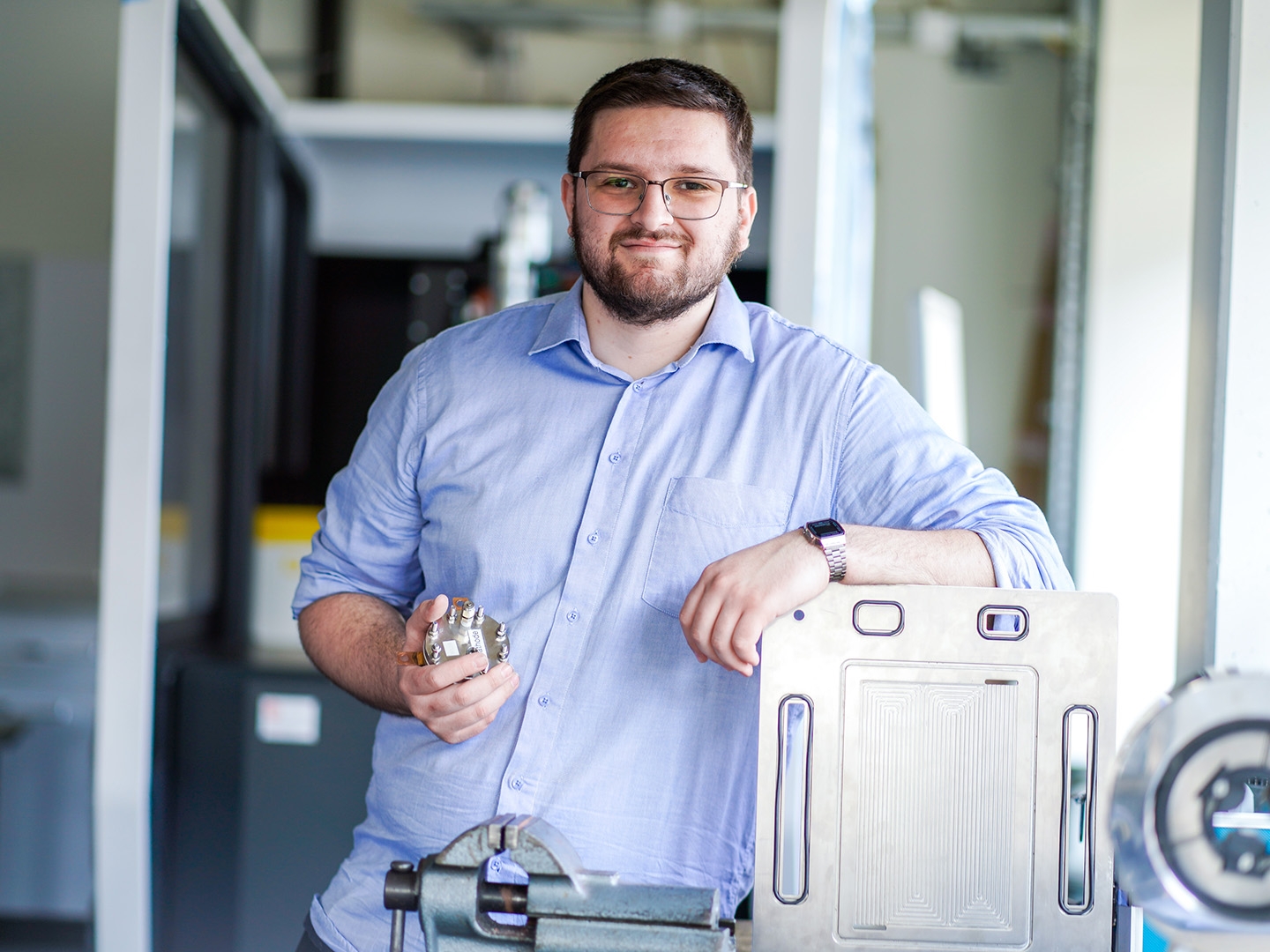Electrocatalysis
The Doctoral Prize of the Chemistry & Energy Division of the German Chemical Society (GDCh) goes to Kevinjeorjios Pellumbi
Dr. Kevinjeorjios Pellumbi was awarded the doctoral prize of the Chemistry & Energy division of the German Chemical Society (GDCh) for his dissertation “Creating Holistic Pathways for the CO2 Electroreduction and Electrochemical Hydrogenations”. The award ceremony took place yesterday in Duisburg – albeit in the absence of the research scientist from the Fraunhofer Institute for Environmental, Safety and Energy Technology UMSICHT. Prof. Dr. Ulf-Peter Apfel (Head of the Electrosynthesis Department) accepted the award on his behalf.

“In my opinion, electrocatalytic technologies are crucial for a more sustainable production of chemicals and fuels,” explains Kevinjeorjios Pellumbi, describing the motivation behind his work. “In particular, CO2 electrolysis and the electrochemical hydrogenation reaction have great potential for industry – for example, with regard to reducing greenhouse gas emissions, the electrification of the chemical industry or the storage and conversion of excess energy into chemical energy.”
At the moment, however, the industrial relevance of these two technologies is still limited. In the eyes of Kevinjeorjios Pellumbi, there are various reasons for this. “On the one hand, the development routes used so far are not yet sufficient to scale the technologies efficiently to industrial scale. They are too slow and too inefficient. On the other hand, robust and cost-efficient catalysts are lacking.”
Holistic electrochemical routes: From electrode structures to cell configuration
The UMSICHT research scientist has therefore focused his work on the question of how CO2 electrolysis and electrochemical hydrogenation reactions can be optimized for industrial application. In doing so, he has set his sights on holistic electrochemical routes – starting with the structure of electrodes and ending with the configuration of cells. “To develop such new routes, a basic understanding is particularly important: The catalyst itself is only one part of a large puzzle. Operating conditions and water management, for example, are just as important.”
One of his main areas of focus was novel Ag(I)-BIAN electrocatalysts that can be used in the electroreduction of CO2. These are silver ions combined with bifunctional ligands to act as electrocatalysts. “As part of my work, I optimized both the catalytic structure and the operating parameters of the electrolyzer,” says Kevinjeorjios Pellumbi. “In doing so, I also kept an eye on improving the electrode, operating conditions and cell. Ultimately, it all contributes to the selectivity for CO and the stability of the reactions.”
Another focus was on the development of robust and cost-effective electrocatalysts for the electrochemical hydrogenation reaction, which the research scientist compared with palladium electrodes. The result: transition metal chalcogenides – in particular those based on the pentlandite crystal matrix – proved to be promising and, with optimized Fe3Ni6S8-based electrodes, achieved a similar activity to palladium electrodes at current densities of up to 240 mA/cm² and yields of up to 50 percent.
Based on these findings, a unique electrocatalytic system has been developed that produces 2-methyl-3-buten-2-ol in single-pass operation with yields of up to 51 percent. This organic compound is used, among other things, as a basic chemical in the production of artificial vitamin A and E.
“Dr. Pellumbis' approach provides new, valuable insights for implementing the energy transition,” said Dr. Nils Bottke (BASF SE), explaining the decision of the GDCh Chemistry & Energy Division to honor the work of the UMSICHT research scientist. The division aims to strengthen the role of chemistry as a key technology in the energy transition. It is one of more than 30 GDCh divisions and has around 550 members from universities, research institutions, industry and administrative staff. Together, they are committed to strengthening cooperation between academia and industry to successfully advance the energy transition.
Incidentally, Kevinjeorjios Pellumbi has already filed several patents in connection with his work – for a novel catalyst layer and for a novel gas diffusion layer.
Last modified:
 Fraunhofer Institute for Environmental, Safety and Energy Technology UMSICHT
Fraunhofer Institute for Environmental, Safety and Energy Technology UMSICHT